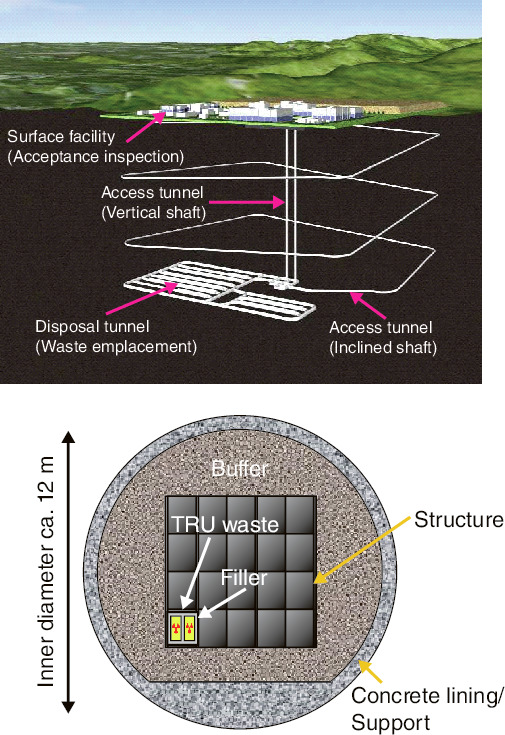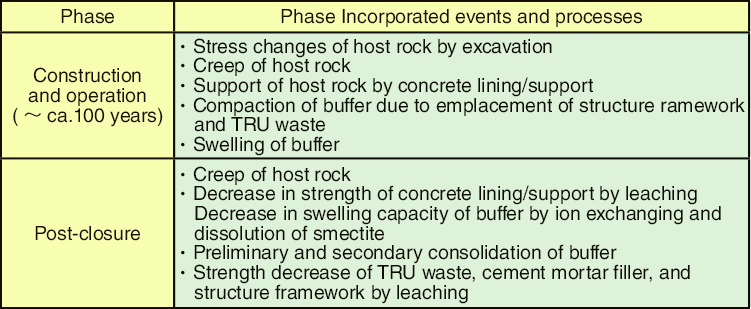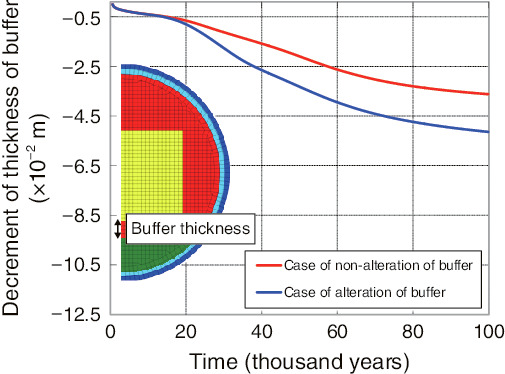
Fig.8-22 Concept of the TRU waste repository
Table 8-1 Events and processes considered in the evaluation model


Fig.8-23 Calculated results using the developed analytical method
Radioactive waste generated in the reprocessing of spent fuel from nuclear power plants and in the fabrication of mixed oxide fuel, excluding high level radioactive waste, is referred to as TRU waste in Japan because it contains transuranic elements. Disposal of highly radioactive TRU wastes is to be done in a purpose built repository located in stable host rock at depths exceeding 300 meters so as to isolate them from the biosphere for a long period. The repository itself will be constructed from concrete and cement mortar (cementitious materials) and compacted bentonite will be used as a buffer material to encapsulate the TRU wastes (Fig.8-22). To perform a safety assessment of TRU waste disposal, the long-term evolution of the repository from the viewpoint of the events and the processes affecting chemistry, dynamics, and hydrology must be evaluated. It is important, for example, to determine the buffer material thickness required to minimize groundwater flow and retard radionuclide migration. A mechanical analysis method was, therefore, developed to evaluate the long-term evolution of a TRU waste repository considering both the mechanical and chemical properties of engineered barrier materials.
Important events and processes were selected by consideration of the construction, operation, and post-closure phases of the repository (Table 8-1), which were then incorporated into the mechanical analysis method. During the post-closure phase, percolating groundwaters will saturate the repository and start to dissolve the more soluble Ca-bearing cementitious material components. The mechanical strength of the cementitious materials will, therefore, decrease and the percolating groundwater will become hyperalkaline. Hyperalkaline percolating groundwater would adversely affect the bentonite buffer, causing conversion from a Na-type to a Ca-type, with an associated loss of plasticity, swelling, and swelling capacity, and an increase in dissolution and degradation. The mechanical analysis method developed here was used to investigate the change in the buffer material thickness caused by hyperalkaline percolating groundwater on a timeframe of up to 100 thousand years (Fig.8-23). It was observed that hyperalkaline percolating groundwater only contributes to the degradation of approximately 2 cm of buffer material thickness after 100 thousand years.
In the future, as a means of conducting a more comprehensive study, a mechanical analysis of the repository that reflects a better constrained numerical analysis of the chemical evolution will be performed.